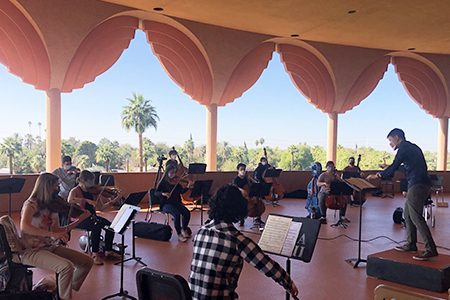ASU orchestras and wind bands explore virtual collaborations, guest artists and innovative curriculum
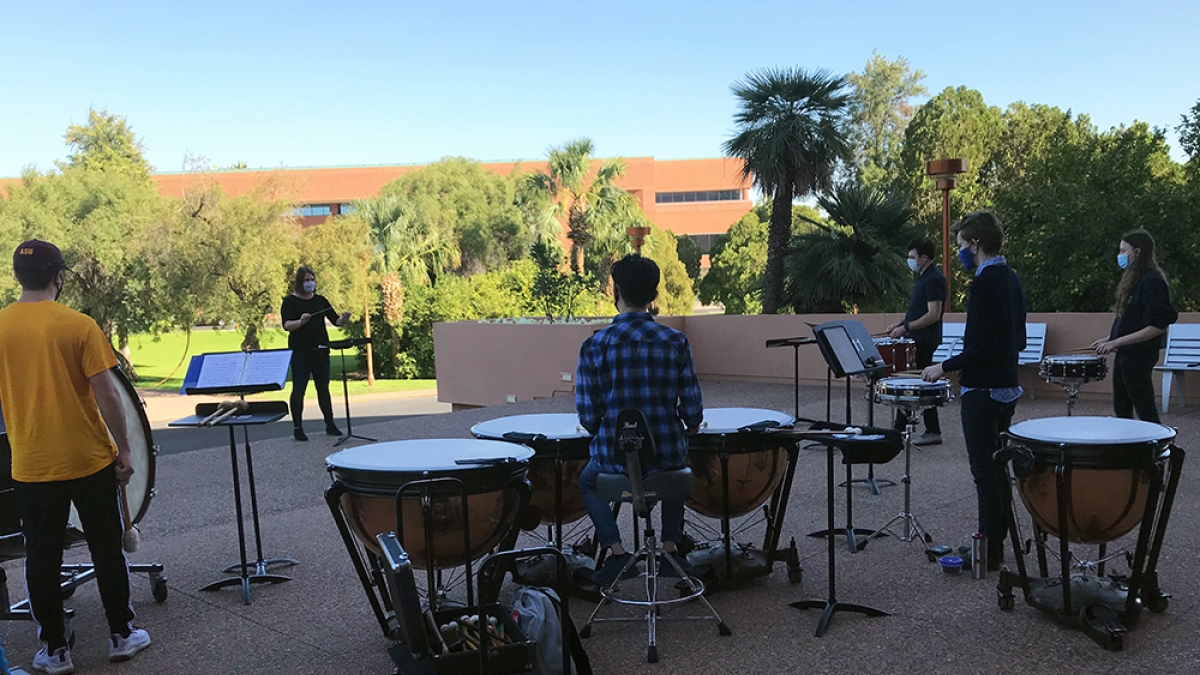
Orchestra and wind band students at ASU.
The 2020–21 performance season has been anything but normal for ASU’s orchestras and wind bands in the School of Music, Dance and Theatre, but in transitioning to virtual high-tech learning modalities, students honed their performance skills and thrived.
“The restrictions that the pandemic has placed on our work have, in many ways, been an inspiration – an invitation, a demand, to innovate,” said Jeffery Meyer, associate professor and director of orchestras. “It has also created the conditions for opportunities that we wouldn’t have had otherwise, and it has been a terrifically exciting journey.”
“Our new curriculum was built around the pillars of experiential learning – digital recording technology; guest artist interaction; new work commissioning and development; diversity, equity and inclusion initiatives; community engagement and student leadership,” said Jason Caslor, associate professor and director of bands.
The ASU Philharmonia with Julie Desbordes as conductor and music director, the ASU Wind Symphony with Jamal Duncan as conductor and associate director of bands, and the ASU Maroon and Gold Bands with James Hudson as conductor and director of athletic bands also collaborated to create a robust new curriculum based on these principles.
In total, the groups recorded over 60 works, connected with over 20 guests artists, collaborated with 17 ASU student composers in the creation of brand-new pieces and commissioned composers Steven Bryant, Carlos Simon, Allan Daleus and Kevin Day.
Mastering new techniques
“We know that the artistic careers our students will embark on after their time at ASU are going to be radically changed due to the pandemic, and we know definitively that high-level recording expertise is going to become more and more essential for success,” Meyer said.
In the fall semester, Meyer and Caslor invited Daniel Jaquette, who teaches sound design in the School of Music, Dance and Theatre, to meet with students in their classrooms both virtually and prerecorded to provide a minicourse on microphones, microphone placement, good recording techniques and the contemporary recording process in general.
“We wanted our students to learn everything they could about recording, from optimal microphone placement/levels to basic recording and editing techniques to, perhaps most importantly, how to collaborate in this virtual environment,” Caslor said.
In the spring semester, world-renowned sound engineer Clarke Rigsby will assist in furthering the students’ growing knowledge of recording technology.
Collaborating around the globe
One major challenge that the large ensembles faced due to the pandemic, the programs’ directors said, was how to creatively involve students located around the globe in collaborative music making.
The combined total of 360 students, many of whom were not in residence and some as far away as China, Taiwan and South Korea, were divided into over 80 smaller ensembles that met regularly over Zoom and chatted online, both synchronously and asynchronously.
Unlike many tiled recordings popular on social media that rely on a third party to edit together a variety of isolated performances, their process required a close collaboration between the musicians. One or two principal players recorded their specific parts into an online digital audio workstation, and then the remaining individual musicians added their parts one by one while listening to what the first musicians recorded. This additive process continued until the entire work was completed, with continuous group feedback and revision throughout the final recorded project.
“We are embracing these changes as opportunities, instead of stopgaps,” said Meyer. “Approaching ensemble music in this manner compels students to see what everybody else is doing at any given moment. Students play in a way that would not be possible with the restrictions of a traditional in-person orchestra or band rehearsal. In this new format, students can hear each other precisely, individually and as a group, and are able to respond, play and digest the score in a more complete way.”
Another collaboration involved 17 composition students from undergraduate to doctoral level writing new works to be recorded by the various ensembles. Many of the composers took advantage of this new virtual format, expanding their compositional ideas to embrace these new mediums and techniques.
ASU Philharmonia, consisting of both music and nonmusic majors, collaborated with dance students on two capstone projects. The first collaboration produced videos of original choreography written and performed by eight-member student dance troupes, with a soundtrack of virtual string ensemble performances. The second project brought together five cohorts of student composers, musicians, choreographers and dancers to co-create five new virtual music and dance pieces.“We are unbelievably proud of our students, their inspiring creative efforts, their leadership and teamwork and their ‘can-do-anything-under-any-circumstances’ heart,” said Desbordes. “Their partnerships truly represent what the school is about – uplifting and inspiring each other and the world they live in.”
The ASU orchestras and wind bands also collaborated with the USC Thornton School of Music and Oberlin College on a joint commission of a new work by Carlos Simon, winner of the 2019 ASU School of Music and ASU Gammage Composition Competition and 2021 Sphinx Medal of Excellence awardee, for a small ensemble that can be performed from a distance.
Spring semester will see additional commissions from ASU’s composition faculty Gabriel Bolaños as well as a large-scale virtual work by Canadian composer Jordan Nobles. The groups plan to present a number of virtual and outdoor performances later in the semester.
Learning from experts
Meyer said the global health crisis has also allowed them to host a variety of top-level guests, visiting artists and speakers who are available to interact virtually with students.
Beethoven scholar Nicholas Kitchen of the Borromeo String Quartet worked with both the renowned ASU Visiting Quartet Residency Program and with the students in the large ensembles. Kitchen created a new performing edition of Beethoven’s Eighth Symphony specifically for the ASU Symphony Orchestra, filled with musical directions that come directly from Beethoven’s manuscripts previously lost in modern performing editions.
“The guest artists that we are bringing in this year are powerhouses in the field,” said Meyer. “We have been talking about everything from effective practice and winning auditions to issues of structural racism in classical music and expanding the canon to become more meaningfully inclusive and broad. We have had guest composers, conductors, educators, arts entrepreneurs, music therapists and leaders of major arts organizations both in the United States and abroad.”
Meyer said many of the guests, such as Aaron Dworkin, founder of the Sphinx Organization, and Marc Bamuthi Joseph, vice president and artistic director of social impact at the Kennedy Center, challenge and inspire the community to reimagine large ensembles through a lens of diversity and equity.
‘Richer than it’s ever been’
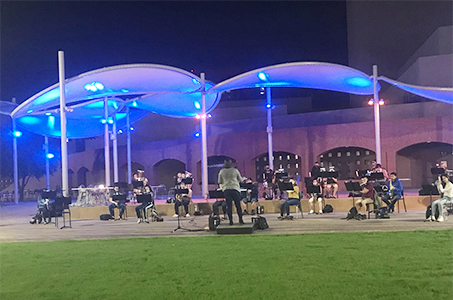
Meyer said that the changes made will have a lasting impact.
“We know that our audiences and students alike miss in-person performances, but our programs are going to be more robust, more inclusive and more deeply involved in meaningful development in the arts for years to come due to the innovations that have been demanded of us,” said Meyer.
More Arts, humanities and education
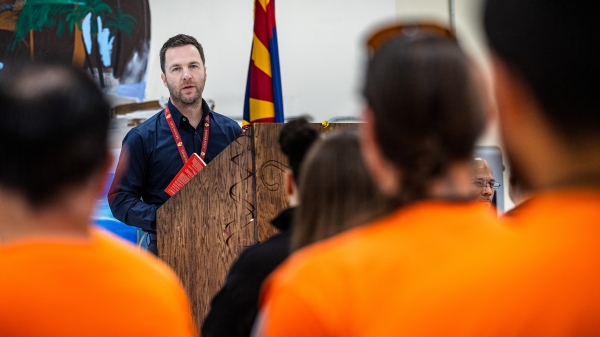
ASU professor, Arizona inmate work to rehabilitate the 'imprisoned mind'
An Arizona State University professor has collaborated with an Arizona inmate on a book that examines why investing in healing…
Illuminating legacy at ASU
In 2020, the ASU Art Museum unveiled a groundbreaking installation, "Point Cloud (ASU)," by renowned artist Leo Villareal. The…
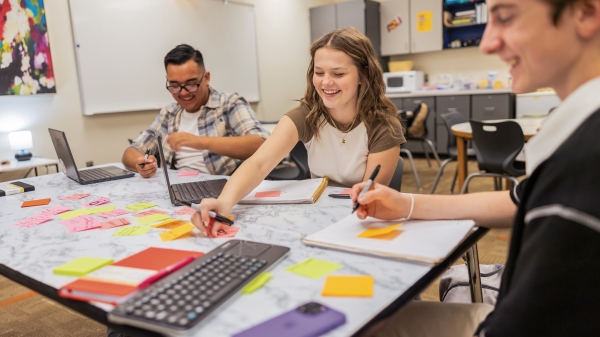
Name change for ASU's Mary Lou Fulton Teachers College reflects college's mission
Arizona State University’s Mary Lou Fulton Teachers College has a new name: the Mary Lou Fulton College for Teaching and Learning…


